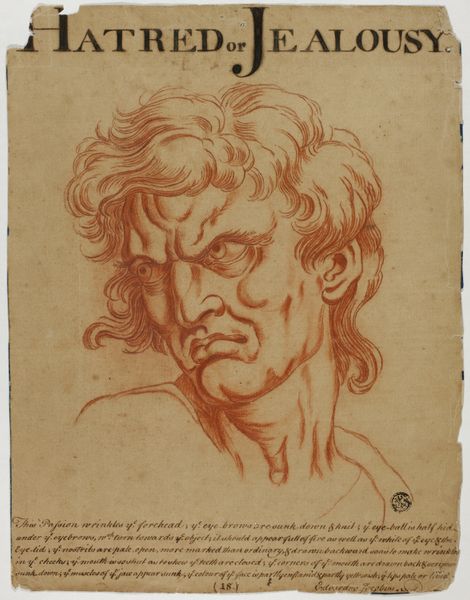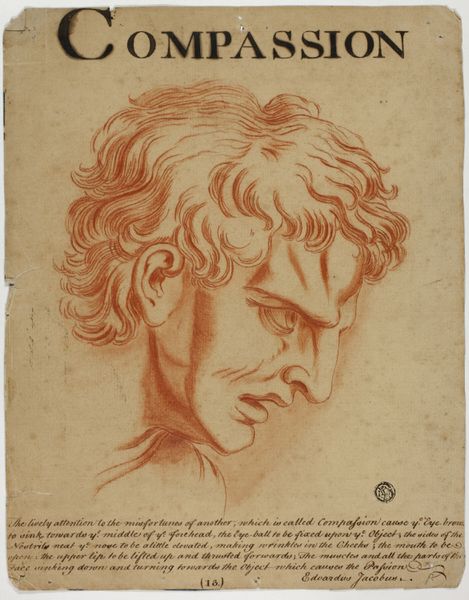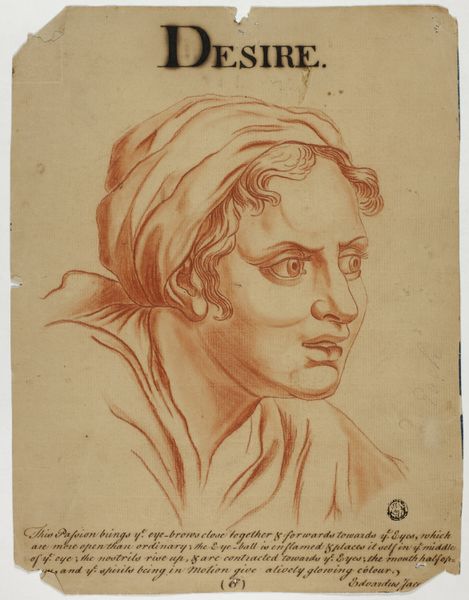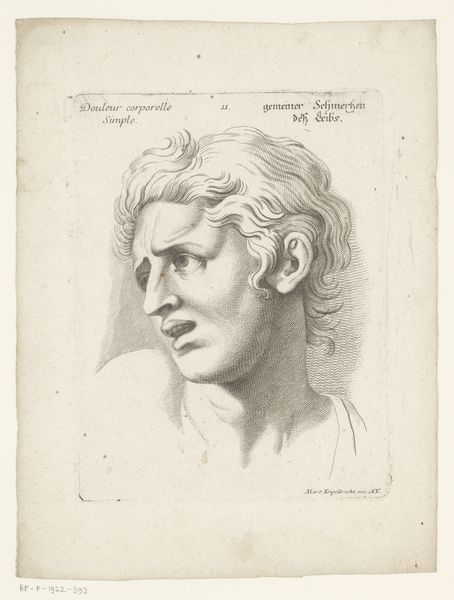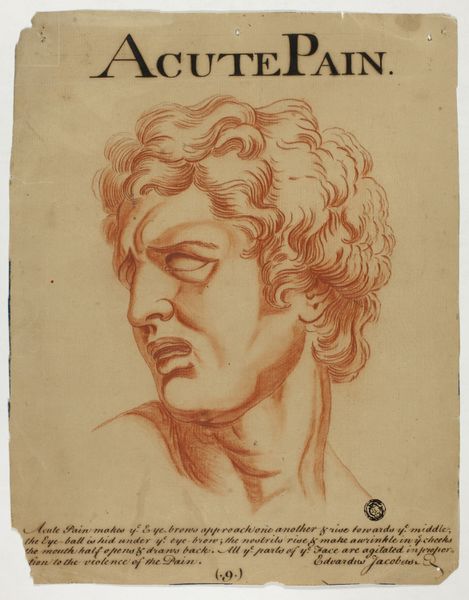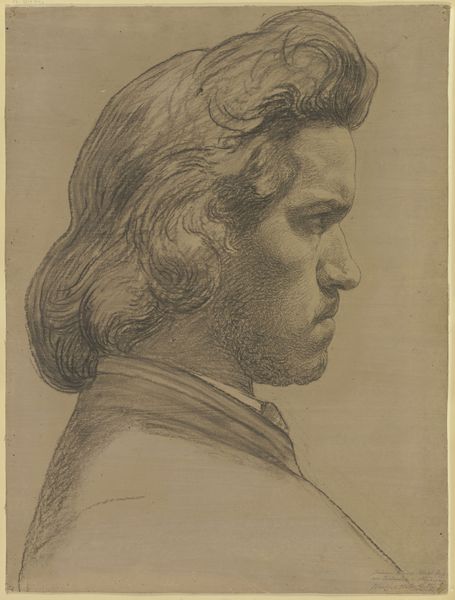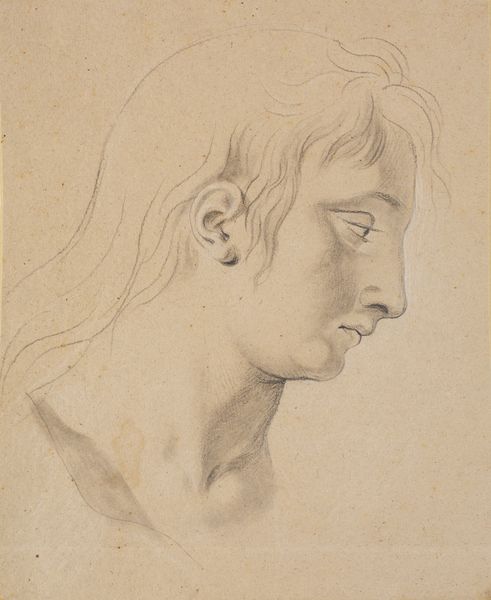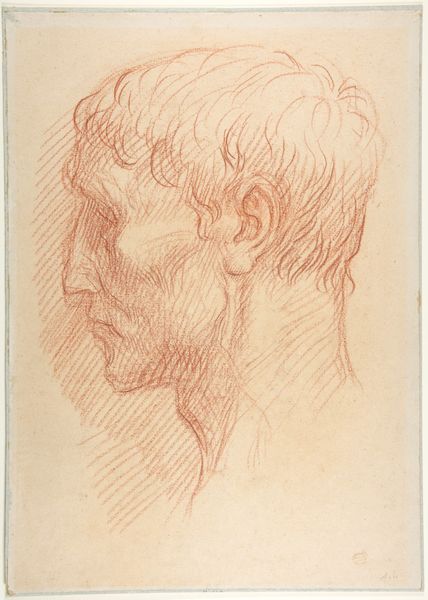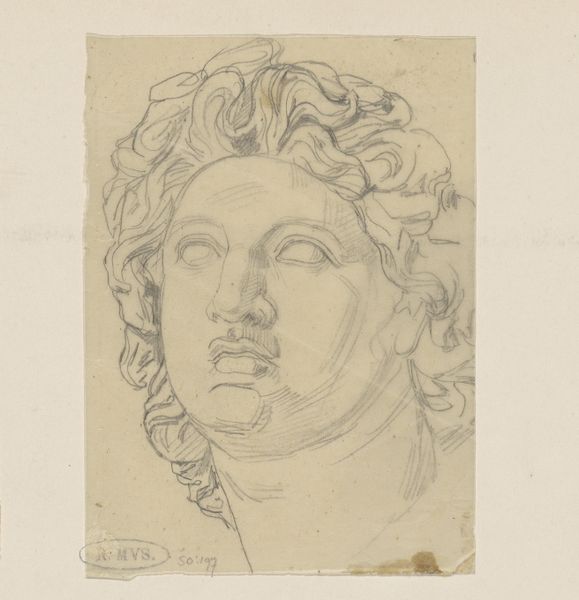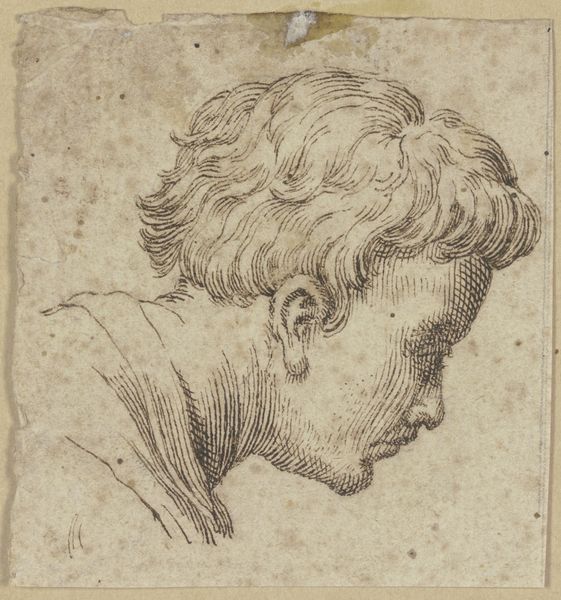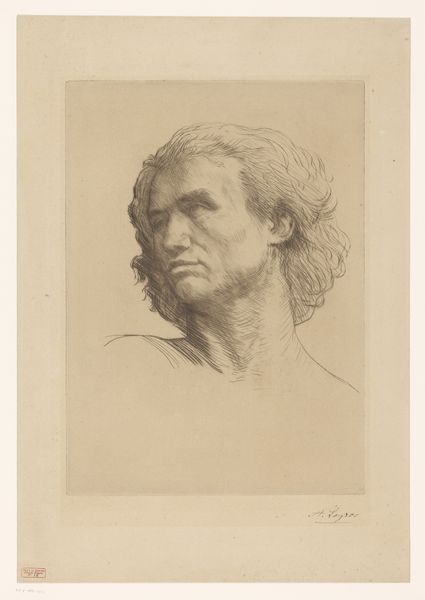
drawing, paper, chalk
#
drawing
#
narrative-art
#
baroque
#
classical-realism
#
figuration
#
paper
#
personal sketchbook
#
portrait reference
#
chalk
#
line
#
sketchbook drawing
#
portrait drawing
#
history-painting
#
academic-art
#
sketchbook art
#
realism
Dimensions: 284 × 216 mm
Copyright: Public Domain
Editor: So, this drawing, "Simple Bodily Pain" by Eduardus Jacobus, created sometime after 1698, is just arresting. It's rendered in chalk on paper, this red chalk, and the intensity of the subject's expression, that grimace... what strikes you when you look at it? Curator: Immediately, I see the lineage of this image, its ancestry. Consider how the language reinforces the classical approach: "Simple Bodily Pain." It's not just an observation, but a systematized portrayal of emotion. It speaks to a broader historical understanding of the body and emotions as subjects to be categorized, understood and then visualized, much like in a medical treatise. Editor: Interesting. Like a cataloging of pain? Curator: Precisely. Look how meticulously Jacobus renders each wrinkle, the tense muscles. It recalls the academic tradition, where understanding and portraying emotions accurately was vital, almost scientific. What is he trying to convey about pain as a universal language here? It seems objective yet...subjective. Don't you think? Editor: It's objective in its anatomical precision, definitely. But the title frames the drawing in terms of how emotion functions on the body, and perhaps what emotion *is*. And what about the inscription beneath? Is that about the relationship between the emotional condition and physical gesture? Curator: Absolutely! It highlights a deliberate attempt to codify emotions visually, and hints at the philosophical currents influencing artistic practice at the time. These images circulated and influenced generations of artists, almost acting as cultural memory, shaping how future artists represented inner states. I also wonder, does this depiction resonate with our contemporary understanding of pain, both physical and emotional? Editor: I'm not so sure, the emphasis feels very different...this systematization makes me a bit uneasy. But I've definitely learned a lot about approaching artworks from a cultural standpoint, and questioning inherited artistic tropes. Curator: Exactly! It is through such inquiry we better grasp cultural assumptions embedded in the artwork itself, seeing it as a living participant in history and continuous cross-cultural communication.
Comments
No comments
Be the first to comment and join the conversation on the ultimate creative platform.
